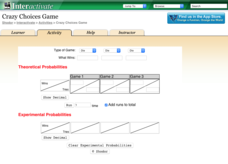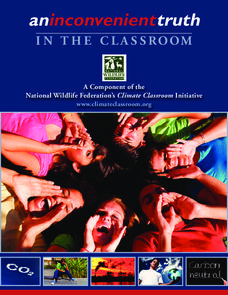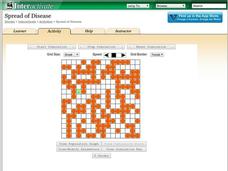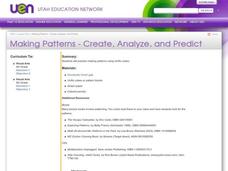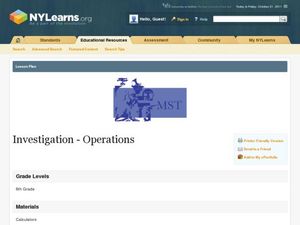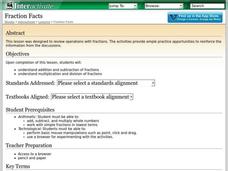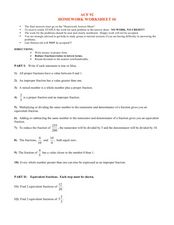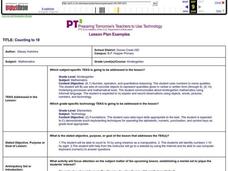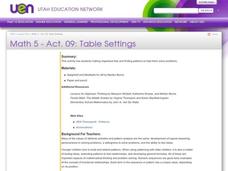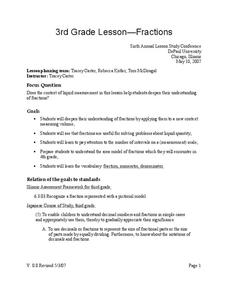Arizona Department of Education
Introduction to Integers
Welcome to the backward world of negative numbers. This introductory lesson teaches young mathematicians that negative numbers are simply the opposite of positive numbers as they use number lines to plot and compare single-digit integers.
Shodor Education Foundation
Crazy Choices Game
Wanna take a chance on which game is best? The resource provides three games of chance using multiple types of games. Games range from coin toss to cards. Choosing a type of game, pupils determine what wins and enter the theoretical...
Shodor Education Foundation
Spinner
Go round and round to compare theoretical and experimental probabilities. Learners set the number of sectors and the number of spins for a spinner. Then, a table displays the experimental and theoretical probabilities of the spinner for...
National Wildlife Federation
An Inconvenient Truth in the Classroom
Global warming — what a hot topic! A thorough unit challenges learners to research, read, explore, and write about carbon, its role and increasing nature in our atmosphere, and how global warming is affecting lives and environments...
Shodor Education Foundation
Spread of Disease
Control the spread of a contagious disease. An applet allows pupils to run a simulation on the spread of a disease. Rules govern how the disease is spread and the length of time it takes to recover. Learners view the spread visually and...
CK-12 Foundation
CK-12 Middle School Math Concepts - Grade 6
Twelve chapters cover a multitude of math concepts found in the Common Core standards for sixth grade. Each title provides a brief explanation of what you will find inside the chapter—concepts from which you can click on and learn more...
Curated OER
Mental Multiplication and Division
Fourth graders play the game ArithmAttack. They complete as many multiplications or divisions as possible in 60 seconds. They are told the maximize the window, then select Multiply from the left menu. Students make sure that the high...
Curated OER
Math Practice Series Worksheet #3
In this mathematics instructional activity, 1st graders solve numerous addition problems by adding single and two-digit numbers to each other. There are 36 problems to solve on the sheet.
Curated OER
Multiplying 11 (A)
In this mathematics worksheet, 3rd graders solve numerous problems by multiplying a two-digit number by a single digit number. They carry-over and add when necessary.
Curated OER
Making Patterns - Create, Analyze, and Predict
Fourth graders practice making patterns using Unifix cubes and identify, analyze, and determine rules for describing numerical patterns involving operations and nonnumerical growing patterns. They also find an example of a pattern in...
Curated OER
Investigation-Operations
Sixth graders explore equations. In this math instructional activity, 6th graders discuss the rules for solving equations. Students apply the rules and solve various equations.
Curated OER
Operations with Mixed Numerals
In this math worksheet, students find the answers to the variety of problems to the number sentences that have mixed numbers.
Curated OER
Fraction Facts
Middle schoolers explore the concept of fractions. In this fractions lesson, students perform basic operations such as addition and subtraction with fractions. Middle schoolers play a game on the computer called 'Fraction Four' that...
Curated OER
Math Homework: Fractions
In this fractions worksheet, students complete true/false questions, find equivalent fractions and use order of operations to solve problems that included exponents.
Curated OER
Counting to 10
Students count to 10 by using cheerios as manipulatives, identify numbers 1-10 by sight, and go to a website by using the Internet and computer keyboard (numeric) to answer questions (with help of teacher).
Curated OER
Egyptian Fractions
Sixth graders take a brief look at what is known about Egyptian Fractions. These are unit fractions - fractions whose numerator is one. We look at how fractions can be represented in terms of Egyptian Fractions. Finally we suggest a web...
Curated OER
Table Settings
Fifth graders explore and examine how to make organized lists and find patterns to help them solve problems. They identify, analyze and determine a rule for predicting and extending numerical patterns involving operations of whole...
Curated OER
The School Store
Students choose between the operations of addition or subtraction to solve a real life problem. In this addition and subtraction lesson, students make a chart of items sold in the school store. Students then work in teams to apply...
Curated OER
Fractions
Students practice measurement. In this fractions lesson, 6th graders measure volume of a liquid, e.g. 1/5 liter, and learn the vocabulary of fractions (numerator, denominator). Students solve sample problems in small groups.
Curated OER
What's My Rule?
Second graders use a variety of problem solving and math skills while playing the "What's My Rule" game. They read "Clean Your Room, Harvey Moon" and discuss family rules and other types of rules, including numerical ones.
Curated OER
Exponent Rules
Students engage in a instructional activity that is concerned with the rules of exponents. They practice solving problems that use exponents in a variety of contexts. Students are shown how to use the rules in numerical sequences and...
Curated OER
Fractions
Fifth graders, after inventorying, add up the numerators of their fractions to see if it is the same number as the denominator. If it is, then they are ready to build whatever they wish, but using only what is in their individual inventory.
Curated OER
"Adding It Up" at James Fort
Students discuss jettons and their archaeological importance at Jamestown. They then practice using historic counting sheets and artifacts to understand the calculating methods of the early 17th Century, and identify their similarities...
Curated OER
Comparison of Snow Cover on Different Continents
Students use the Live Access Server (LAS) to form maps and a numerical text file of snow cover for each continent on a particular date. They analyze the data for each map and corresponding text file to determine an estimate of snow cover...



